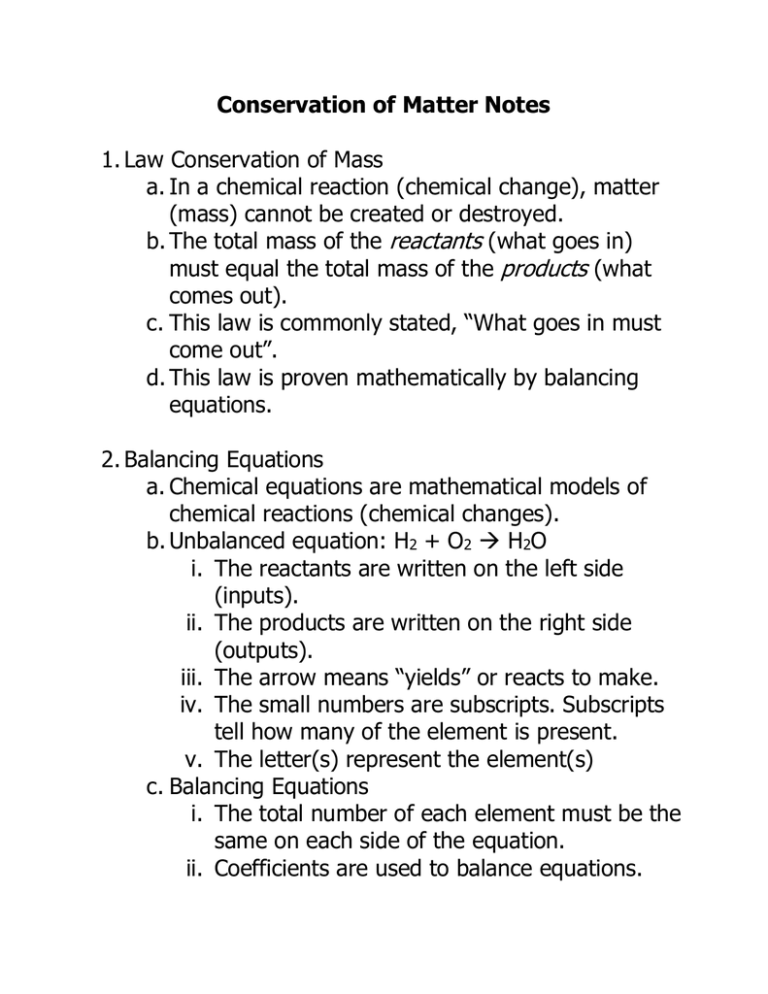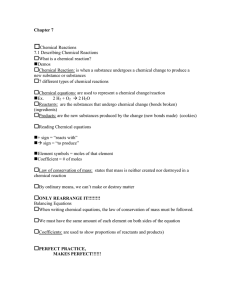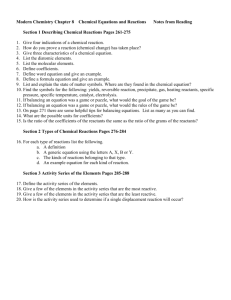Conservation of Matter Notes 1. Law Conservation of Mass
advertisement

Conservation of Matter Notes 1. Law Conservation of Mass a. In a chemical reaction (chemical change), matter (mass) cannot be created or destroyed. b. The total mass of the reactants (what goes in) must equal the total mass of the products (what comes out). c. This law is commonly stated, “What goes in must come out”. d. This law is proven mathematically by balancing equations. 2. Balancing Equations a. Chemical equations are mathematical models of chemical reactions (chemical changes). b. Unbalanced equation: H2 + O2 H2O i. The reactants are written on the left side (inputs). ii. The products are written on the right side (outputs). iii. The arrow means “yields” or reacts to make. iv. The small numbers are subscripts. Subscripts tell how many of the element is present. v. The letter(s) represent the element(s) c. Balancing Equations i. The total number of each element must be the same on each side of the equation. ii. Coefficients are used to balance equations. iii. 2H2 + O2 2H2O iv. The total atomic mass of the reactants must equal the total atomic mass of the products. Practice balancing equations here before continuing notes. 3. Energy and reactions a. It takes energy to start a reaction. This is called activation energy. b. Chemical energy is stored in chemical bonds. c. Endothermic reactions absorb energy into the bonds. During the reaction the substances “feel colder”. d. Exothermic reactions release energy stored in the bonds. During the reaction the substances “feel warmer” 4. Types of reactions. a. Synthesis i. Products are more complex than the reactants that entered the reaction (build up). ii. Example: b. Decomposition i. Products are less complex than the reactants that entered the reaction (break down). ii. Example: c. Replacement i. Products are equal or similar in complexity to the reactants that entered the reaction. ii. Example

